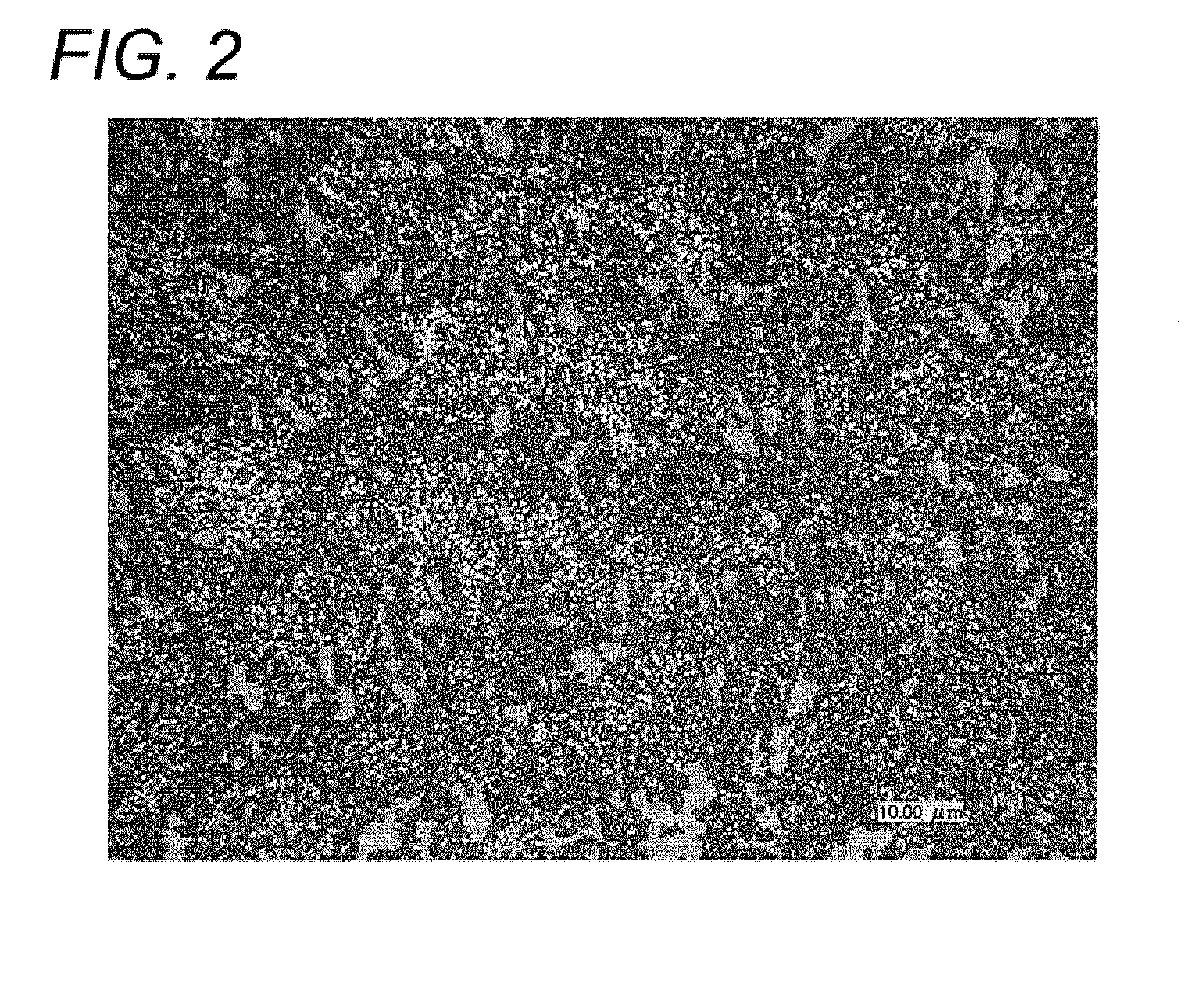Organic el device
a technology of organic el and light output, which is applied in the field of organic el devices, can solve the problems of insufficient increase of an overall light output, and achieve the effect of increasing light output and improving overall light outpu
- Summary
- Abstract
- Description
- Claims
- Application Information
AI Technical Summary
Benefits of technology
Problems solved by technology
Method used
Image
Examples
example 1
[0067]86.8 parts by weight of tetraethoxysilane, 34.7 parts by weight of γ-methacrylloxypropyltrimethoxysilane, and 75 parts by weight of 0.1N-nitric acid were added to 803.5 molecular weight of isopropylalcohol, and then sufficiently mixed with each other by using disper to give a solution. The resultant solution was stirred for two hours with being kept in thermostat bath at 40° C., giving 5-percent solution by weight of silicone resin having a weight-average molecular weight of 1050. Subsequently, the silicone resin solution was mixed with methylsilicone particles (available from GE Toshiba silicone Co. Ltd as “Tospal 120” having a mean diameter of 2 μm) as light dispersion particles 6, such that the ratio of methylsilicone particles / silicone resin was controlled at 80 / 20 in weight of solid content (a corresponding value of condensed compound, provided that Si is substituted with SiO2 in tetraalkoxysilane or with SiO1.5 in trialkoxysilane). The resultant mixture was dispersed by ...
example 2
[0074]The coating material was applied on the substrate 1 by spin-coater and then dried in the same way as in Example 1 repeatedly ten times to form the light dispersion layer 5. Thickness of the light dispersion layer 5 was measured by using contact surface profilometer (available from Japan Veeco Co. Ltd. as “DekTak3”). The mean thickness of the light dispersion layer 5 is about 8 μm. The surface of this light dispersion layer 5 was observed by using optical microscope (available from Keyence Co. Ltd. as “VHX-500”). FIG. 3 shows an optical microscopic photograph of surface of this light dispersion layer 5, with 500-fold magnification. As shown in FIG. 3, the light dispersion particles 6 almost wholly occupy within the light dispersion layer 5 (the light-transmissive region 9 has a dimension of less than 1 μm). The light dispersion layer 5 is formed with the light dispersion region 8 and the light-transmissive region 9. The light dispersion region 8 occupies about 90 percent of the...
example 3
[0076]The coating material was applied on the substrate 1 by spin-coater and then dried in the same way as in Example 1 only one time, so as to provide the light dispersion layer 5. Thickness of the light dispersion layer 5 was measured by using the contact surface profilometer (available from Japan Veeco Co. Ltd. as “DekTak3”). The mean thickness of the light dispersion layer 5 is about 1 μm. The surface of this light dispersion layer 5 was observed by using optical microscope (available from Keyence Co. Ltd. as “VHX-500”). FIG. 4 shows an optical microscopic photograph of the surface of this light dispersion layer 5, with 500-fold magnification. As shown in FIG. 4, the light-transmissive region 9 containing no light dispersion particles 6 almost wholly occupies the light dispersion layer 5, which contains only a fraction of the light dispersion region 8 filled with the aggregated light dispersion particles 6. The light dispersion layer 5 has a sea-islands structure, in which the l...
PUM
 Login to View More
Login to View More Abstract
Description
Claims
Application Information
 Login to View More
Login to View More - R&D
- Intellectual Property
- Life Sciences
- Materials
- Tech Scout
- Unparalleled Data Quality
- Higher Quality Content
- 60% Fewer Hallucinations
Browse by: Latest US Patents, China's latest patents, Technical Efficacy Thesaurus, Application Domain, Technology Topic, Popular Technical Reports.
© 2025 PatSnap. All rights reserved.Legal|Privacy policy|Modern Slavery Act Transparency Statement|Sitemap|About US| Contact US: help@patsnap.com



